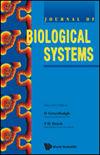ROLE OF ALLEE EFFECT AND HARVESTING OF A FOOD-WEB SYSTEM IN THE PRESENCE OF SCAVENGERS
IF 1.5
4区 数学
Q3 BIOLOGY
引用次数: 0
Abstract
The role of scavengers, which consume the carcasses of predators along with predation of the prey, has been ignored in comparisons to herbivores and predators. It has now become a topic of high interest among researchers working with food-web systems of prey–predator interactions. The food-web considered in these works contains prey, predators, and scavengers as the third species. In this work, we attempt to study a food-web model of these species in the presence of the multiplicative Allee effect and harvesting. It is observed that this makes the model more complex in the form of multiple co-existing steady states. The conditions for the existence and local stability of all possible steady states of the proposed system are analyzed. The global stability of the steady state lying on the x-axis and the interior steady state have been discussed by choosing suitable Lyapunov functions. The existence conditions for saddle-node and Hopf bifurcations are derived analytically. The stability of Hopf bifurcating periodic solutions with respect to both Allee and harvesting constants is examined. It is also observed that multiple Hopf bifurcation thresholds occur for harvesting parameters in the case of two co-existing steady states, which indicates that the system may regain its stability. The proposed model is also studied beyond Hopf bifurcation thresholds, where we have observed that the model is capable of exhibiting period-doubling routes to chaos, which can be controlled by a suitable choice of Allee and harvesting parameters. The largest Lyapunov exponents and sensitivity to initial conditions are examined to ensure the chaotic nature of the system.在食腐动物存在的情况下,狭缝效应的作用和食物网系统的收获
食腐动物在捕食猎物的同时吃掉捕食者的尸体,与食草动物和捕食者相比,食腐动物的作用被忽视了。它现在已经成为研究猎物-捕食者相互作用的食物网系统的研究人员高度关注的话题。这些作品中考虑的食物网包括猎物、捕食者和作为第三物种的食腐动物。在这项工作中,我们试图在存在乘法Allee效应和收获的情况下研究这些物种的食物网模型。据观察,这使得模型以多个共存稳态的形式变得更加复杂。分析了该系统所有可能稳态存在和局部稳定的条件。通过选择合适的李雅普诺夫函数,讨论了位于x轴上的稳态和内部稳态的全局稳定性。分析推导了鞍节点分岔和Hopf分岔的存在条件。研究了Hopf分岔周期解对Allee常数和收获常数的稳定性。还观察到,在两个共存稳态的情况下,收获参数会出现多个Hopf分岔阈值,这表明系统可能会恢复其稳定性。所提出的模型也在Hopf分岔阈值之外进行了研究,我们观察到该模型能够表现出通向混沌的倍周期路径,这可以通过适当选择Allee和收获参数来控制。为了保证系统的混沌性质,研究了最大李雅普诺夫指数和对初始条件的敏感性。
本文章由计算机程序翻译,如有差异,请以英文原文为准。
求助全文
约1分钟内获得全文
求助全文
来源期刊
CiteScore
2.80
自引率
12.50%
发文量
31
审稿时长
1 months
期刊介绍:
The Journal of Biological Systems is published quarterly. The goal of the Journal is to promote interdisciplinary approaches in Biology and in Medicine, and the study of biological situations with a variety of tools, including mathematical and general systems methods. The Journal solicits original research papers and survey articles in areas that include (but are not limited to):
Complex systems studies; isomorphies; nonlinear dynamics; entropy; mathematical tools and systems theories with applications in Biology and Medicine.
Interdisciplinary approaches in Biology and Medicine; transfer of methods from one discipline to another; integration of biological levels, from atomic to molecular, macromolecular, cellular, and organic levels; animal biology; plant biology.
Environmental studies; relationships between individuals, populations, communities and ecosystems; bioeconomics, management of renewable resources; hierarchy theory; integration of spatial and time scales.
Evolutionary biology; co-evolutions; genetics and evolution; branching processes and phyllotaxis.
Medical systems; physiology; cardiac modeling; computer models in Medicine; cancer research; epidemiology.
Numerical simulations and computations; numerical study and analysis of biological data.
Epistemology; history of science.
The journal will also publish book reviews.

 求助内容:
求助内容: 应助结果提醒方式:
应助结果提醒方式:


